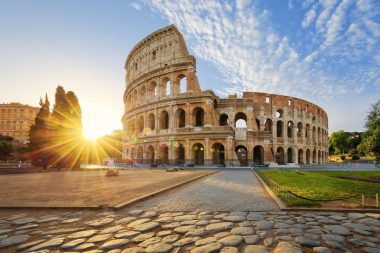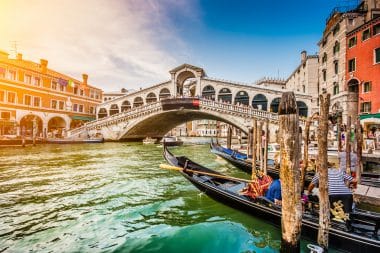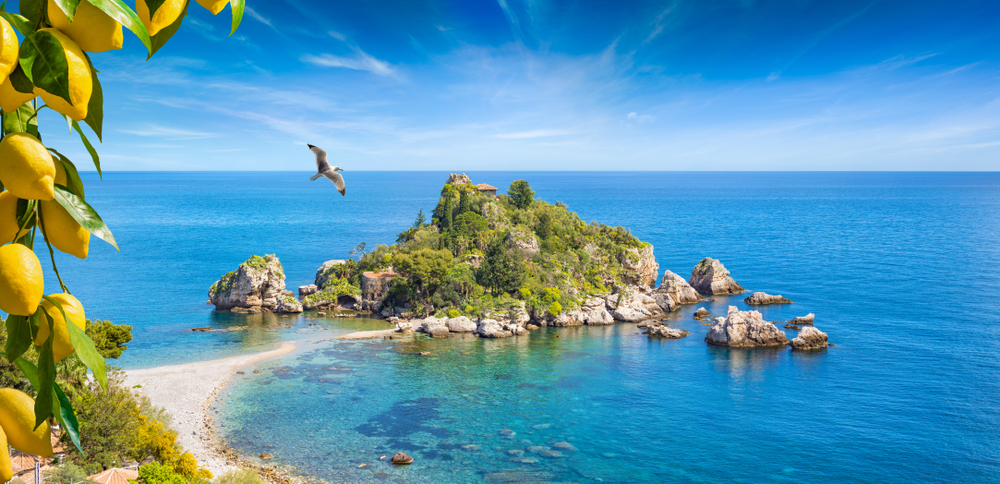The fact that Italy has not only been a place of cultural and tourist longing since the 20th century is underlined by Goethe’s famous trip to Italy, which led through Tuscany via Rome to Sicily between 1786 and 1788. Since then, Italy has lost little of its tourist attractiveness, which is also due to the multifaceted travel destinations on the Italian Mediterranean coast. Rome, Tuscany, Sicily, Venice, the Ligurian Riviera of Flowers – the different regions each set their own travel highlights. For example, the old towns of Rome, which have been recognized by UNESCO as a World Heritage Site, differ from Renaissance cities such as Florence and the magnificent buildings from the time of the Republic of Venice. And the beaches of the Riviera of Flowers have a completely different charm than those in Sicily. Whichever destination in Italy is the personal highlight: It is not for nothing that the southern European country on the Mediterranean is one of the most popular travel destinations for Germans from Goethe to this day.
If you have spent a lot of time with your Italian teacher , you will certainly want to use the language on site. We have selected the most popular destinations in Italy for you:
1. Rome

The Eternal City on the Tiber already shaped cultural life on the Mediterranean in ancient times. The home of about three million inhabitants provides a staccato of sights that can only be discovered in such density in a few places on earth. Since 1980, Rome’s old town has been recognized as a UNESCO World Heritage Site – together with the magnificent sacred buildings of Vatican City.
The most famous landmark of the city is the Colosseum, which already shone as the largest Colosseum on earth in ancient Roman times. The ancient heritage of the Eternal City is also commemorated by the Roman Forum, which was once a key site of the Roman Republic. In the old town, which is well worth seeing, you can also see the baroque masterpiece Trevi Fountain and the Spanish Steps, immortalized in numerous films, where Audrey Hepburn and Gregory Peck once set a cinema highlight in A Heart and a Crown. The wishes of the Roman Emperor Hadrian gave rise to Castel Sant’Angelo and the Angel’s Bridge, which have been immortalized in works from Puccini to Dan Brown. Not yet mentioned was the Vatican, which houses an incomparable masterpiece among sacred buildings with St. Peter’s Basilica and preserves strokes of genius by Michelangelo and Botticelli with the Vatican Museums including the Sistine Chapel. The Eternal City of Rome is the cultural highlight of every trip to Italy.
2. Tuscany
On the west coast of Italy, where the Tyrrhenian Sea lies, is picturesque Tuscany. Interesting fact: The name Tyrrhenian Sea owes itself to the Greek name for the Etruscans, called Tyrrhenoi. And the Etruscans were among the first peoples to consider Tuscany their home. The Renaissance once flourished in the regional capital Florence, which is home to about 370,000 inhabitants and is one of Italy’s beautiful and worth visiting cities. Like Rome, Florence’s historic city center has been a UNESCO World Heritage Site since 1982. Architectural masterpieces such as the Cathedral of Santa Maria dei Fiore, the Ponte Vecchio and the Palazzo Vecchio of the same name are enthroned here. The urban side of Tuscany presents itself at the same time in Pisa with its world-famous Leaning Tower and in Siena, whose medieval old town is a World Heritage Site. Reasons to visit Tuscany are local wines such as Chianti, Sassicaia and Brunello di Montalcino as well as the picturesque natural landscapes of the Val d’Orcia, also part of the World Heritage Site.
3. Venice

The Grand Canal, Venice’s historic lifeline, winds its way through the heart of the famous lagoon city over a length of four kilometres. A large part of the sights are lined up along the Grand Canal, which is why a tour with one of the famous gondolas through the historic city center can be worthwhile. The world-famous Rialto Bridge, for example, forms over the Grand Canal, which with its 48 meters length and striking construction is a popular photo motif near the former German merchant branch Fondaco dei Tedeschi. Perhaps the most famous historic center of Venice is St. Mark’s Square, which unites the Doge’s Palace and St. Mark’s Basilica with St. Mark’s Tower into an architectural work of art. The fact that Venice is also a modern city of culture is proven by the annual Venice Film Festival, which is one of the most influential film festivals of its kind in Italy. The city of canals and bridges still exerts a special tourist gravity today.
4. Liguria and Riviera of Flowers
The Riviera dei Fiori, also known as the Blumenriveria, unfolds on the coast of Liguria – not far from Monaco and the French Cote d’Azur. The origin of the name is easy to explain: regional floriculture, to which an important part of the cut flowers in Italy is owed, flourishes on the coast of Liguria. If you want to experience a beach holiday in northern Italy, you should not miss the beautiful region. In addition to tranquil coastal villages and towns such as Sanremo and Bordighera, highlights such as Portofino, Cinque Terre and Genoa are also within easy reach. Among the most famous beaches in Liguria are those of Imperia, the beach of Sanremo or the fine sand of Finale Ligure.
5. Sicily
There are only a few places where you can enjoy Italian island life as optimally as in Sicily. Shaped by the face of Mount Etna, the 3,357-metre-high volcano on the northeast coast, cities such as Catania, Palermo and Messina await you here. At the foot of Mount Etna, Catania unfolds, whose urban core is a UNESCO World Heritage Site, also thanks to its Baroque buildings. Messina was already inhabited in ancient times, a city characterized by historic sacred buildings and palazzi. The old town of Palermo is also worth seeing, as is the picturesque Cefálu, an idyllic seaside resort with dream beaches in the area. And if you are interested in the antiquity of the region, you should not miss the historic Taormina with its theater.


